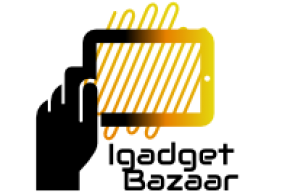Meta description: Advancement in white-collar crimes and technologies has made forensic document verification more critical. Let’s understand how and where it’s useful.
The demand for online services and technologies has increased in this digital world. All businesses involved in financial transactions must comply with identity verification and know your customer (KYC) regulations. Document verification protects your business from identity theft, fraudulent activities, and scams.
It’s shocking that many businesses still use manual verification techniques, which are both time taking and error-prone. This gap can be covered using advanced remote technologies to speed up this process.
Today, businesses that leverage machine learning (ML) and artificial intelligence (AI) can automate their document verification systems. Businesses don’t rely on manual verification systems for forensic document verification but automate these processes by creating more scalable and efficient ways.
Importance Of Forensic Document Verification
In 539 AD, forensic documents were simply altered by changing the handwriting and seals. However, scams now include stealing, money laundering, and other fraudulent actions. White-collar crime has become more prevalent as technology continues to advance.
Forensic document verification is generally linked with white-collar crimes such as check fraud and will modification. And the advancement in technology has made this forensic document verification process more significant. With Al software, Adobe Photoshop, Illustrator, Acrobat, and others, criminals can change any information quickly and make it according to their choices.
Benefits Of Forensic Document Verification
With the advancement of technology, forensic document verification has many advantages.
Investigation Purposes
Forensic document verification is used to check the authenticity of provided shreds of evidence in complex cases, such as murder, forgeries, suicide, kidnapping, bank robberies, rape cases, and theft. So, with forensic document verification, it’s easier now to choose what’s right.
Prevent Fraudulent Activities
Forensic document verification prevents fraud by checking the authenticity of documents. This way, it saves businesses and individuals from financial loss.
Automated tools can examine the paper, ink, office equipment, and handwriting techniques used to modify the document. KYC verification is used in fraud cases. The details highlight the time frame in which the alteration has been made.
Legal Compliance
In a legal situation, forensic document verification confirms that it complies with legal standards. It is used in all legal sectors.
Fraudulent Checks
The main thing that comes into play in forensic document verification is the modification of legal documents. For example, if someone alters a check to increase the required amount, AI software examines the alteration by checking how the ink of different pens reacts under infrared radiation.
The Procedure Of Forensic Document Verification
The steps to conducting forensic document verification are described below.
Examination Of The Document
The physical examination of the document type, the ink used, and the alteration. And verify the resources where you get the document.
Comparison
Comparison between the document and the original source, like the person’s signature matching his/her other signature on previous records.
Analysis
Make an analysis of the document by implementing the techniques, writing technique, and signature analysis.
Used Techniques To Check The Document
Use special office equipment, chemical analysis tools, and software to check the document for signs of tampering.
Results
Interpreting findings and a detailed report of the results to wrap things up. It ensures that forensic document verification is done by professionals or experts to reduce errors.
Challenges in forensic document verification
The verification of questioned documents may face these kinds of challenges.
Non-Original Documents
When an original document is subjected to a copying process, it may lose some information. Original records may have flaws and characteristics not found in copied documents. So it can be difficult for automated tools to draw conclusions from copies.
Insufficient Information
The forensic document verification process will not conclude accurately if the proper information is not provided for reasonable verification.
Poor Quality
If the quality of the questioned document is poor, this process will likely be unable to render an accurate conclusion. Examples of such papers are burned documents or documents containing writing that is difficult to read, unclear, or distorted.
Distorted Or Disguised Writing
The document may contain disguised and distorted writing that can’t be read. For example, graffiti on the wall is considered unclear and can’t be matched with the person’s original writing.
Lack Of Similar Writing For Comparison
It is essential to get the known writing written in the time frame in which the questioned document was found.
Conclusion
If the whole procedure is implemented accurately, it is the most essential aspect of KYC’s strategy. Forensic document verification saves businesses from fraud, financial losses, and identity theft. The online system saves time and energy and reduces human error caused by manual verification.




